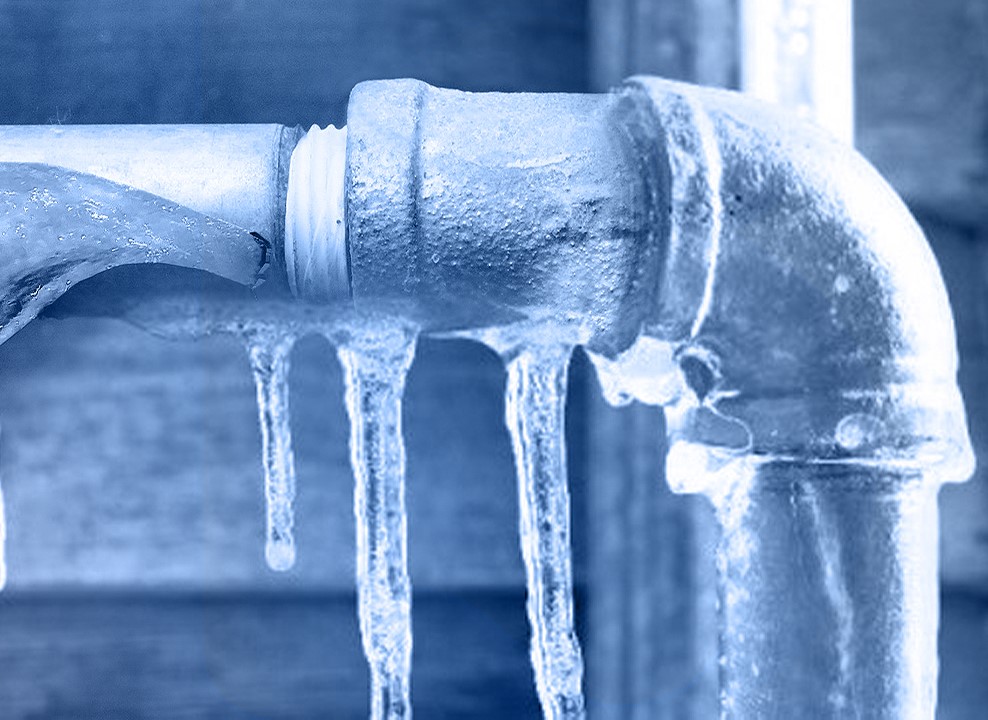Guidance for Avoiding Frozen Pipes in Winter: Specialist Insights
Guidance for Avoiding Frozen Pipes in Winter: Specialist Insights
Blog Article
The author is making several great points related to How to Prevent Your Pipes From Freezing as a whole in this post underneath.

Winter can damage your plumbing, specifically by freezing pipelines. Right here's how to stop it from occurring and what to do if it does.
Introduction
As temperatures decline, the danger of frozen pipelines rises, possibly causing costly fixings and water damage. Recognizing just how to prevent icy pipes is vital for property owners in cold environments.
Avoidance Tips
Insulating prone pipelines
Cover pipelines in insulation sleeves or use heat tape to secure them from freezing temperature levels. Concentrate on pipelines in unheated or exterior areas of the home.
Heating methods
Maintain indoor areas effectively warmed, especially areas with plumbing. Open cupboard doors to permit cozy air to flow around pipelines under sinks.
Just how to determine icy pipelines
Search for lowered water circulation from faucets, uncommon odors or sounds from pipelines, and noticeable frost on revealed pipes.
Long-Term Solutions
Architectural adjustments
Take into consideration rerouting pipes far from exterior wall surfaces or unheated areas. Include extra insulation to attic rooms, basements, and crawl spaces.
Updating insulation
Purchase top quality insulation for pipes, attic rooms, and wall surfaces. Correct insulation assists maintain constant temperature levels and decreases the risk of icy pipelines.
Protecting Outside Plumbing
Garden tubes and outside taps
Disconnect and drain yard tubes before wintertime. Set up frost-proof spigots or cover outdoor faucets with protected caps.
Understanding Frozen Pipelines
What causes pipes to freeze?
Pipelines ice up when subjected to temperature levels listed below 32 ° F (0 ° C) for expanded durations. As water inside the pipes ices up, it broadens, taxing the pipeline wall surfaces and potentially creating them to burst.
Threats and problems
Frozen pipes can result in water supply disturbances, building damages, and expensive repairs. Burst pipelines can flood homes and cause substantial structural damages.
Signs of Frozen Piping
Recognizing frozen pipes early can prevent them from breaking.
What to Do If Your Pipes Freeze
Immediate actions to take
If you suspect frozen pipelines, maintain faucets open up to eliminate pressure as the ice thaws. Use a hairdryer or towels soaked in hot water to thaw pipes gradually.
Final thought
Avoiding frozen pipelines needs positive actions and fast reactions. By comprehending the causes, signs, and preventive measures, homeowners can shield their pipes throughout winter.
5 Ways to Prevent Frozen Pipes
Drain Outdoor Faucets and Disconnect Hoses
First, close the shut-off valve that controls the flow of water in the pipe to your outdoor faucet. Then, head outside to disconnect and drain your hose and open the outdoor faucet to allow the water to completely drain out of the line. Turn off the faucet when done. Finally, head back to the shut-off valve and drain the remaining water inside the pipe into a bucket or container. Additionally, if you have a home irrigation system, you should consider hiring an expert to clear the system of water each year.
Insulate Pipes
One of the best and most cost-effective methods for preventing frozen water pipes is to wrap your pipes with insulation. This is especially important for areas in your home that aren’t exposed to heat, such as an attic. We suggest using foam sleeves, which can typically be found at your local hardware store.
Keep Heat Running at 65
Your pipes are located inside your walls, and the temperature there is much colder than the rest of the house. To prevent your pipes from freezing, The Insurance Information Institute suggests that you keep your home heated to at least 65 degrees, even when traveling. You may want to invest in smart devices that can keep an eye on the temperature in your home while you’re away.
Leave Water Dripping
Moving water — even a small trickle — can prevent ice from forming inside your pipes. When freezing temps are imminent, start a drip of water from all faucets that serve exposed pipes. Leaving a few faucets running will also help relieve pressure inside the pipes and help prevent a rupture if the water inside freezes.
Open Cupboard Doors
Warm your kitchen and bathroom pipes by opening cupboards and vanities. You should also leave your interior doors ajar to help warm air circulate evenly throughout your home.

Do you really like more info about How to prepare your home plumbing for winter weather? Make a remark further down. We'd be happy to listen to your ideas about this blog entry. We hope that you come back again soon. Please take the opportunity to promote this page if you appreciated it. Thanks so much for going through it.
Quote & Schedule Report this page